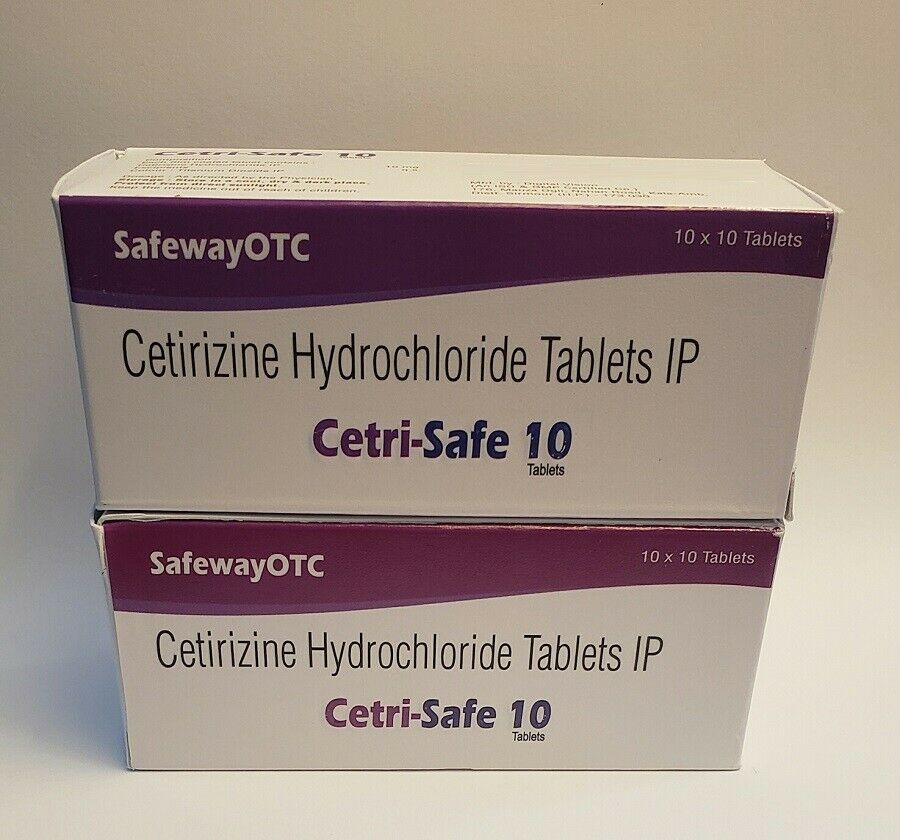
Systematic review registration:, identifier. CTZ is well tolerated in the pediatric population, except for an increased risk of somnolence. Ĭonclusion: Moderate-to-low certainty evidence revealed that CTZ could improve clinical improvement and QOL in children with AR and have comparable efficacy with other AHs. Moderate-to-low certainty evidence demonstrated that CTZ was well tolerated and did not increase the risk of severe and overall AEs, cardiotoxicity, damage to the central nervous and digestive systems, or other systems in children, except for the risk of somnolence. It had similar efficacy compared with other antihistamines (AHs) or montelukast, without showing better control of AD severity in children. Moderate certainty evidence showed that CTZ was found to benefit allergic symptom control and QOL in children with AR. Results: A total of 22 studies (5,867 patients) were ultimately included, most of which had a low or unclear risk of bias. Data were pooled using the Cochrane Review Manager 5.4, and a fixed-effects model was used if heterogeneity was evaluated as low ( I 2 < 50%) otherwise, a random-effects model was adopted. Secondary outcomes included laboratory test changes, safety (adverse events, AEs), and quality of life (QOL). Primary outcomes included scales that evaluated the recovery of allergic conditions in AR, such as the total symptom score (TSS). Two investigators independently identified articles, extracted data, conducted meta-analyses, assessed the Cochrane risk of bias of individual studies, and evaluated the evidence certainty using the Grading of Recommendations Assessment, Development, and Evaluation approach any discrepancies were resolved by consulting with a third investigator.

Randomized controlled trials (RCTs) or quasi-RCTs of children with allergic diseases receiving CTZ compared with those receiving placebo or other drugs were included without language limitations. Methods: PubMed, Embase, the Cochrane Library, World Health Organization International Clinical Trials Registry Platform,, and the European Union Clinical Trials Register were systematically searched from inception to April 21, 2022. This study investigates the efficacy, acceptability, and safety of cetirizine (CTZ) for treating allergic diseases in children and provides evidence-based assertions for decision-making. Objective: The global prevalence of allergic diseases has led to a negative and extensive impact on the health and lives of a large population of children. 4Department of Pharmacy, First Hospital of Tsinghua University, Beijing, China.3Department of Pediatrics, Peking University Third Hospital, Beijing, China.2Institute for Drug Evaluation, Peking University Health Science Center, Beijing, China.1Department of Pharmacy, Peking University Third Hospital, Beijing, China.The precise nature of the platelet derived factor(s) and their target of action remains to be determined.Pengxiang Zhou 1,2†, Qiong Jia 3†, Zhenhuan Wang 4, Rongsheng Zhao 1,2* and Wei Zhou 3* Our present results confirm and extend previous data demonstrating that antigen stimulated platelets can induce leucopenia in non-immunised animals and this can be inhibited by the anti-allergic agent, cetirizine, by an action which is probably unrelated to its anti-histamine properties. In these experiments, we failed to support a role for lipoxygenase products as mediators of the platelet-dependent leucopenia, as the selective lipoxygenase inhibitor BWA4C (50 mg kg-1, p.o.) was ineffective. The site of action of cetirizine is most likely to be the platelet as leucopenia induced by the neutrophil agonists leukotriene B4 (LTB4) (30 ng kg-1) and platelet activating factor (PAF) (30 ng kg-1) were not modified by cetirizine treatment. injection of 5 micrograms kg-1 of histamine. All doses of anti-histamines were used at concentrations which completely inhibited the bronchoconstriction to an i.v.

Terfenadine (50 mg kg-1, p.o.) and mepyramine (2 mg kg-1, i.v.) were completely inactive in this respect. This platelet-dependent leucopenia was inhibited by prior treatment of the recipient animal with cetirizine (10-30 mg kg-1, i.v.). In contrast, there was no change in the leucocyte number following antigen challenge of guinea-pigs that had received platelets from non-immunised animals. Intravenous administration of ovalbumin (1 mg kg-1) to guinea-pigs that had previously been injected with 3.5 x 10(9) platelets from actively sensitized animals induced an approximately 40% decrease in the number of circulating leucocytes 30-60 min later, whereas the number of platelets was not affected.


 0 kommentar(er)
0 kommentar(er)
